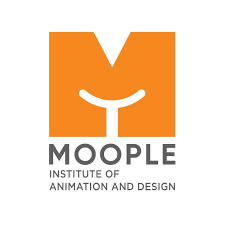Motion graphics is a field that is growing very rapidly. It involves the animation, design, and technology of lifeless visuals, making them come alive. Motion graphics are everywhere, from social media to advertisements, films, websites, and mobile applications. The greater the number of engaging visuals, the greater the need for skilled motion graphics artists. A motion graphics course has become a promising future topic.
Why Motion Graphics is Important Today?
The world has become highly visual, and people expect images to have more dynamism and to be interactive. The way motion graphics do this by turning simple visuals into rich content is a key value proposition. Animated graphics enable the simplification of intricate ideas and add brand meaning.
Businesses are using motion graphics to differentiate themselves in the marketplace. Motion graphics make brand messages more memorable, making them more attractive. Companies rely on compelling content in an increasingly competitive world. This desire for standout visuals is creating demand for motion design professionals in nearly every industry.
What You Learn in a Motion Graphics Course?
A motion graphics course offers much more than animation. The foundational design concepts will cover color theory, typography, and layout. Color theory, typography, and layout are essential in achieving an effective visual that could leave an impact. Lastly, you learn to place movement in designs, a crucial element of motion graphics.
Other critical courses that help in the development of motion graphics include the following key software: Adobe After Effects, Photoshop, and Cinema 4D. These are considered the tools of motion design at present. With knowledge of this software, your chances of being hired become stronger, and you will also be able to generate professional-quality graphics.
Diverse Career Options in Motion Graphics
When taking a career option in motion graphics, there is quite an option to go for the doubles. It gives way to getting hired as one could either be a motion designer a video editor or only a VFX artist, and each position will give distinct challenges or rewards together. Moreover, growing digital content also constrains the company from seeking individuals who could further their video editing business requirements, all the while taking care of some tasks under the header of motion graphics.
This allows a motion designer to specialize by his training, depending on whether his heart lies with character animation, whether in 2D or 3D. If his strength happens to be storytelling, may be working on creating narrative visual content for films or advertisements. This possibility for specialization makes it easy for one to find a career path that matches one’s interests and strengths.
Why Companies Rely on Motion Graphics?
Since today people have a bombardment of information, visually it needs to be quite unique to catch attention. In this regard, motion graphics make the visuals quite memorable as well as very easy to understand. Brands look forward to making complicated things simple. Brands wait to give something different with their products than others have.
Motion graphics also enhance user experience. For instance, the animation of logos and video introductions help a company showcase a strong brand identity. A very short explainer video is also very effective in improving engagement and understanding. This makes it evident why companies in various sectors hold motion designers in great regard.
The Rise of Freelance and Remote Opportunities
The freelance market for motion graphics has grown significantly. Freelancing is a very attractive option for many creatives because it offers independence. Companies are more open to hiring freelance motion designers from anywhere, especially with the shift toward remote work. This makes it possible to work with clients across regions and industries, all from a home office.
By freelancing, you have a chance to work on many different projects and develop an all-rounded portfolio. A freelance motion designer can choose to work on whatever kind of project they prefer, say brand promotions or title animations. More and more individuals are working remotely; which makes freelancing a pretty flexible career option for a motion designer.
A Global Demand for Motion Graphics
Today, there is increased importance on motion graphics all over the globe. More and more business-minded people recognize the benefit of using animated content. Subsequently, they seek capable motion designers. Visual content works out just fine with any given culture, hence the widespread appeal of motion design on such a broad scale throughout the world. The talents learned from taking a motion graphics course apply to global job markets.
It also has the potential to involve clients from other countries, because, with the current state of today’s digital world, opportunities are not confined by locations. As long as you have the skills and the technology, you can work with people from around the globe.
Conclusion
In a nutshell, the field of motion graphics is pretty interesting with diverse career paths. As digital media grows, so will the need for motion graphics. A well-structured course will equip you to step into this promising industry. Moople Institute provides excellent ground in motion graphics that help you take your first steps into a rewarding career.

